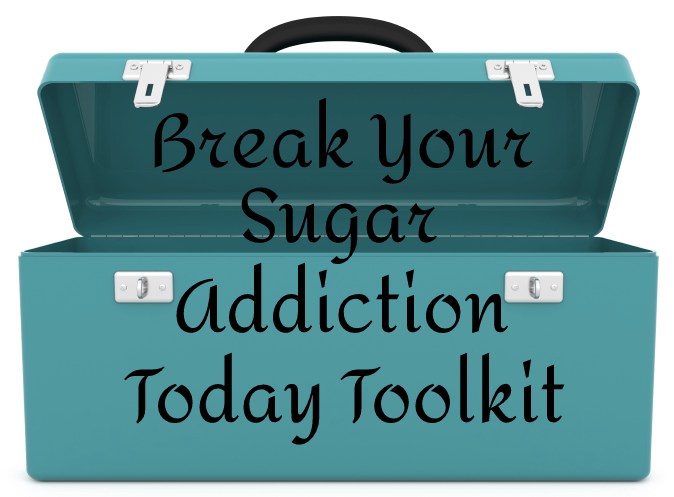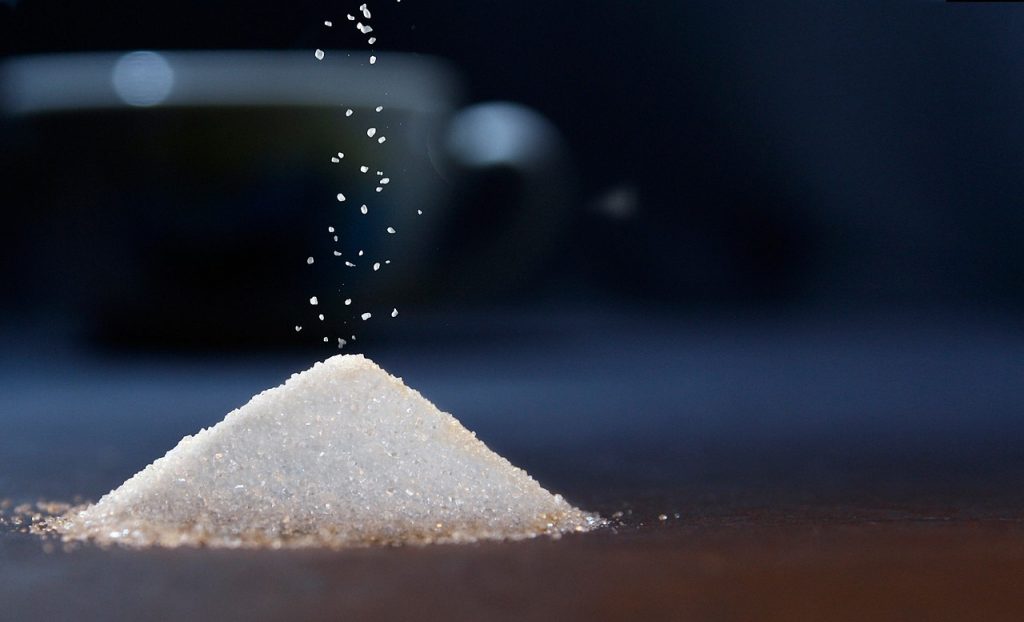Before we discuss how to identify the presence of insulin resistance symptoms in your life you must first understand the role of insulin in your body.
When we eat sugar or any food that breaks down into sugar in the body, this elevates the body’s glucose levels. Glucose is the technical term for blood sugar. When blood sugar rises, then the pancreas has the job of bringing it back down again, and it does so by releasing insulin. When the pancreas releases insulin, this alerts the glucose receptors to open and one of three things occur. It is taken into the cell immediately and used for energy, then any excess glucose either gets stored in the liver as glycogen which can be used at a later date as needed, or it’s stored as fat in the cell. There is always more sugar than the body needs when one eats sugar and carbohydrates, so a great deal of it is getting stored as fat.
Glucose is essential for the mind and body to function adequately, however you don’t want too much or too little. Too much leads to things like insulin resistance and type 2 diabetes, while too little leads to things like hypoglycemia and lack of energy.
Unfortunately, many people don’t notice the arrival of insulin resistance symptoms before its too late, because they have not been educated about what to look for and the diet they have been led to believe is healthy is really at the root.
Every time you eat sugar or food that gets broken down into sugar, including starches, beans, and whole grains, then your body goes through the process described above. If you are continually ingesting foods that force the body to go through this process, then over time there is too much sugar for the pancreas to handle. Each time it detects sugar in the bloodstream, then it releases insulin. The liver can only store a certain amount of glycogen in the liver so ultimately the sugar keeps getting stored in the cell as fat.
Eventually, the glucose receptors say “hey we have way too much fat here, we can’t store anymore,” and they “resist” the pressure of the pancreas to store anymore. However, the pancreas says, “but we’re swimming in sugar in here, this person keeps pumping us with sugar and we have to get it out of the bloodstream.” So the pancreas releases even more insulin and forces the glucose receptors to store more of it as fat. Then the glucose receptors get even more resistant and refuse again to store anymore as fat and so the pancreas releases more insulin. The more sugar in the bloodstream, the more the pancreas releases insulin and the more resistant the receptors become.
This results in high levels of insulin being released on a continual basis, called hyperinsulinism. High levels of insulin in the body result in disruption to the cells, inflammation, and a landslide of destruction to the various systems in the body resulting in conditions like type 2 diabetes, obesity, high triglycerides, high blood pressure, and many more.
At this point, even though glucose levels remain high, none of it is available to be used by the cells for energy, which often results in cravings for carbohydrates, excessive fatigue, and weight gain.
Eventually, the body stops responding to insulin at all, the pancreas either gets too worn out to continue its job, or it gets damaged by the high levels of insulin and can no longer release insulin, this is when blood sugar levels remain high and type 2 diabetes occurs.
Insulin resistance usually occurs in tandem with leptin resistance. Leptin is a hormone in our fat cells that tells us when we’re full. When leptin resistance develops, then hunger doesn’t turn off and leads to overeating and cravings for sugar and carbs.
Early Signs and Symptoms of Insulin Resistance
Many of the early symptoms of insulin resistance go unnoticed because they are typically labeled something else. These are some of the symptoms that are possible.
- hypoglycemia or low blood sugar
- mood swings – which are triggered by erratic changes in blood sugar
- chronic fatigue or low energy
- cravings for sugar and/or carbs
- exhaustion
- brain fog, difficulty focusing or paying attention
- acidosis
- mental fatigue
- weight gain
- afternoon blahs
- anxiety and/or anxiety disorders
- depression
- adrenal fatigue
- compulsive overeating/food addiction
- candida yeast overgrowth
- hormone imbalance
- sleepiness after a meal
- sugar and/or carb addiction
- irritable bowel and other bowel disorders
- gas, bloating, indigestion
- poor memory and impaired learning abilities
- frequent urination
- excessive thirst
- extra weight in belly
However, it’s important to note that the existence of the symptoms above does not always equal insulin resistance, but they do often go hand in hand. However, these symptoms are also shared with a variety of other conditions, so it’s important to work with a knowledgeable health care provider for diagnoses.
Late Stage Insulin Resistance Symptoms
When insulin resistance symptoms progress, serious conditions develop. If you have any of the following, you likely have insulin resistance.
- high triglycerides
- high cholesterol
- high blood pressure
- obesity (however, it’s important to note that insulin resistance occurs in thin people as well)
- fatty liver and/or liver disease
- alcoholism
- breast, prostate or colon cancer
- auto-immune disorders
- pos – polycystic ovary syndrome
The list of symptoms that may be associated with insulin resistance is vast and may also include autism, weakened immune system, anorexia, bulimia, nutritional deficiencies, osteoporosis, kidney disease, blood clots, food allergy and sensitivity, constipation, and many more.
Causes of Insulin Resistance
The higher your blood sugar levels the more insulin you release, the more insulin you release, the more resistant the receptors become. Therefore the causes of insulin resistance lie in the substances that cause our blood sugar to rise, which include the following:
Sugar, White Flour & Refined Foods
The primary cause of insulin resistance is the consumption of sugar, white flour, and other refined carbohydrates. They cause an excessively high level of blood sugar.
Whole Grains and Other Carbohydrates
The second major cause is the consumption of carbohydrates in general. This includes foods like potatoes, peas, beans, sweet potatoes, and whole grains like corn, brown rice, oats, wheat, barley, rye, etc. All carbohydrates break down into sugar in the body. These high starch foods cause a rise in blood sugar levels and the release of insulin as described in the first section of this discussion. Their impact on the endocrine system is the same as sugar.
Whole foods like low-starch vegetables and low-sugar fruits have a minimal impact on blood sugar and insulin.
Stress
Stress is the third primary cause of insulin resistance. When you’re under stress your adrenal glands release adrenaline, which tells the liver to dump its glycogen into the bloodstream to deal with the stress at hand. Of course, as we learned earlier when the pancreas sees all this sugar in the bloodstream, it responds by releasing insulin.
If you are under stress continuously, then your liver will be releasing sugar into the bloodstream constantly and the pancreas will constantly be releasing insulin. Eventually, the glucose receptors start resisting because it’s too much sugar to deal with. If you are already progressing towards insulin resistance because of the wrong diet, then excess stress will push you down the road faster. However, even if you don’t have resistance yet, the mere existence of excessive stress alone can result in insulin resistance because it triggers the whole cycle as if you’ve eaten sugar.
Menopause, Andropause, and Aging
As we age our tolerance for carbohydrates often decreases because we’ve been eating them for decades and the prevalence of insulin resistance increases. As we get older, the body eventually wears out from the yo-yo blood sugar response, which makes us more vulnerable to insulin resistance. So foods you got away with eating in your younger years may now cause you problems.
Additionally, changes in hormone levels, adrenal function, thyroid function, and metabolism in both men and women during menopause and andropause and the years preceding them can also leave one vulnerable. Insulin resistance symptoms may appear out of nowhere with no warning. This is especially true for perimenopausal women.
Nutritional Deficiencies
There are a variety of vital nutrients that are essential for the body to regulate how well you convert sugar into energy. If these nutrients are absent in the body, then blood sugar maintenance will be impaired, which can contribute to insulin resistance. Since most people are eating a poor diet low in vitamins and minerals this is a common contributor.
Nicotine and Caffeine
When you use nicotine or drink caffeine, they both release adrenalin, which triggers the liver to pump the bloodstream with glucose. Naturally, the pancreas responds with insulin and so forth and so forth, as described above.
Alcohol
Alcohol is a potent source of sugar. It is the most refined sugar you consume. It doesn’t even have to be digested. It is absorbed into the bloodstream instantly through the gastrointestinal wall and causes high levels of blood sugar.
Environmental Toxins
Common everyday chemicals in your environment put excessive stress on the endocrine system, which results in the adrenal glands alerting the liver to pump sugar into the bloodstream in the same manner as nicotine and caffeine.
Insulin Resistance Treatment – Reversing Insulin Resistance
The great news is that insulin resistance symptoms can be reversed simply by changing the diet and engaging in regular exercise. Yes, it’s that simple. Experts like Professor Loren Cordain and Dr. Al Sears tell us that insulin resistance and type 2 diabetes can almost always be reversed with proper diet and exercise. Even WebMD explains it can be reversed.
Since the primary cause of insulin resistance is sugar and the consumption of carbohydrates, when you remove these foods from your diet and replace them with adequate fat and protein then the vicious cycle will stop.
If there is no excess sugar in the bloodstream, then cells will start to burn off what is stored as fat, the pancreas will stop releasing insulin all the time and the glucose receptors will stop being resistant. Thus blood sugar and insulin levels will stabilize. When insulin restabilizes, then triglycerides, blood pressure, cholesterol, etc. stabilize as well.
Exercise will also be crucial because it burns glucose off and lowers insulin levels. Brief periods of intense exercise, such as that found in the PACE exercise program is the most effective form of exercise in this case because it helps stabilize the autonomic nervous system by telling the adrenal glands to stop releasing adrenalin that triggers the liver to dump glycogen into the bloodstream.
However, exercise alone will not work because you’d have to exercise continues to burn off all the sugar if you continue to eat carbohydrates. But when used in combination with the removal of starchy carbohydrates it enhances the reversal. If you have a lot of stress in your life, then exercise is even more important.
Of course, other substances that trigger adrenalin and the liver to release glucose in the bloodstream must cease as well, like smoking, drinking alcohol, and caffeine.
Reduce stress and get adequate sleep. The regular practice of deep breathing exercises, mindfulness, and mindfulness-based meditation are simple yet powerful ways to bring blood sugar down triggered by stress because they turn off the stress response system. Make time for eight or nine hours of sleep a night and take naps if needed.
Since nutritional deficiencies are a common cause of insulin resistance, a comprehensive nutritional supplement program designed with the help of your health care provider can be helpful. Three of the most common and beneficial include Chromium, B6, and glutamine. Each of these aids in the process of regulating blood sugar and assists during the process of changing the diet. Other important nutrients may include all the B vitamins, magnesium, manganese, vanadium, vitamin C, and E. A health care provider who practices functional medicine can help advise you when designing a nutrient plan.
The Best Diet for Insulin Resistance

The bottom line is that all foods that cause blood sugar levels to rise need to be eliminated or at least greatly restricted. Dr. Charles Gant tells us that starchy carbohydrates are totally non-essential in the diet. You can acquire all the energy needed through protein and short-chained fatty acids.
All carbohydrates break down into glucose in the body. However, the most important factor is how rapidly they convert to sugar and how long the blood sugar remains high. All foods high in starch like whole grains, potatoes, and beans cause a rapid and intense rise in glucose. Potatoes, for example, are about equal to sugar. Carbohydrates found in non-starchy vegetables and whole fruits have less impact on blood sugar.
One of the first steps you want to take when looking for the best diet for insulin resistance is to become familiar with the GI, also known as the glycemic index. Foods that are high on the glycemic index cause a higher spike in blood sugar, while foods that have a lower glycemic index are processed slower, which results in smaller amounts of sugar appearing in the bloodstream at one time, which is easier for the body to manage.
Dr. Al Sears recommends that you don’t eat foods that have a GI of more than 40. Marcelle Pick, OB/GYN NP, recommends keeping your carbohydrate consumption to no more than 22 grams per meal.
However, the easiest and truly the best diet for insulin resistance symptoms is to follow the Paleolithic Diet. As Professor Loren Cordain points out in his book, The Paleo Diet, all the components needed to reverse insulin resistance are inherent in the Paleolithic diet simply because you are eating the foods that nature intended you to eat. The foods you were genetically designed to eat do not result in disruption of blood sugar and insulin levels.
The best diet for insulin resistance is very simple:
- an abundance of lean meats and fish
- eggs
- an abundance of non-starchy vegetables
- small amounts of nuts and seeds
- small amounts of low-sugar fruits
- fat from meat, as well as olive oil, avocados or avocado oil, walnut oil, flax and fish.
- an abundance of clean water
- that’s it. nothing more
Wheat, corn, rye, rice, brown rice, barley, beans, potatoes, sweet potatoes, peas, or any other starchy food should be avoided or eaten only on occasion.
Fruit juices, caffeine, soda pop, alcohol, etc., should be avoided.
Dried fruit should be eaten only on occasion as it is high in sugar as well.
A low-fat diet is the worse thing you can do for yourself.
Although not technically part of the Paleolithic diet, butter will not have a negative impact on blood sugar and yogurt won’t either if eaten moderately without sugar.
Food should be organic, because the presence of pesticides, herbicides, additives, preservatives, etc., triggers the stress response system, which as we learned earlier releases adrenalin, which alerts the pancreas to release insulin.
When we look over the list of foods that will reverse insulin resistance we clearly see that when we return to the diet that our ancestors ate we are giving our body exactly what it needs for optimal health. The best diet for insulin resistance is also the best diet for any other health condition and humanity in general.
Insulin Resistance Test
An actual insulin resistance test per se is not available. Instead, diagnoses are made by looking at the comprehensive picture of your health using a variety of tools, including the presence of insulin resistance symptoms, health conditions you have, and lab work. Your lifestyle, level of stress, type of diet you eat, and patterns for exercising will be taken into account as well.
For example, if you have high triglycerides and low HDL which typically occur in insulin resistance then a knowledgeable physician would suspect resistance and pursue further testing like a glucose tolerance test.
Dr. Charles Gant recommends a blood test that measures insulin after fasting overnight and then again two hours after a high carbohydrate meal. He states a normal insulin level is 6 to 8, while 12 is problematic and 16 indicates a definite problem. Marcelle Pic recommends a glucose level no higher than 75 to 80. If fasting glucose climbs to 100 then we’re talking about prediabetes, and if it hits 126 then we’re looking at diabetes.
According to Marcelle Pick, OB/GYN NP, it is believed that at least 25% of the population has full-blown insulin resistance, which amounts to more than 80 million Americans. However, due to the diet we consume, most everyone has some degree of resistance. She also tells us that the percentage is much higher in women who are in perimenopause. Other studies have prevalence as high as 44 percent in the elderly population.
These are alarming statistics and a clear indication that the diet most of society consumes is deadly. Ideally, the time to make changes is before insulin resistance symptoms began to develop and testing is required. Insulin resistance is completely avoidable by making the right choice in food and exercising.
It’s important to be aware that many traditional mainstream physicians are not properly educated about insulin resistance and therefore you may be better off seeking a health care provider who practices what is called functional medicine or integrative medicine to make an accurate diagnosis and design a plan for recovery.
References
Insulin Resistance Archives – Marcelle Pick, OB/GYN NP
Dr. Charles Gant – Endocrine Webinars
https://www.cegant.com/seminars
Dr. Al Sears, PACE: The 12-Minute Fitness Revolution. Wellness Research & Consulting, Inc., 2010.
Professor Loren Cordain. The Paleo Diet. Wiley, 2001


